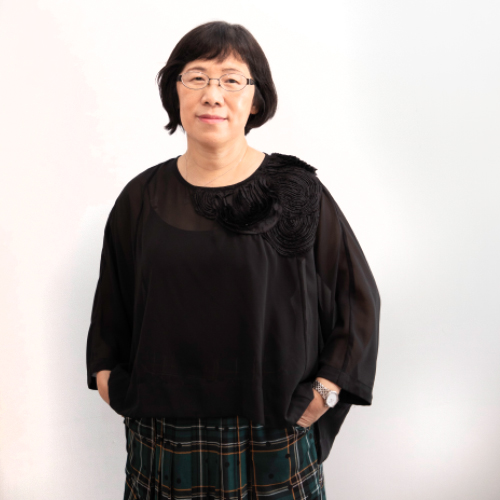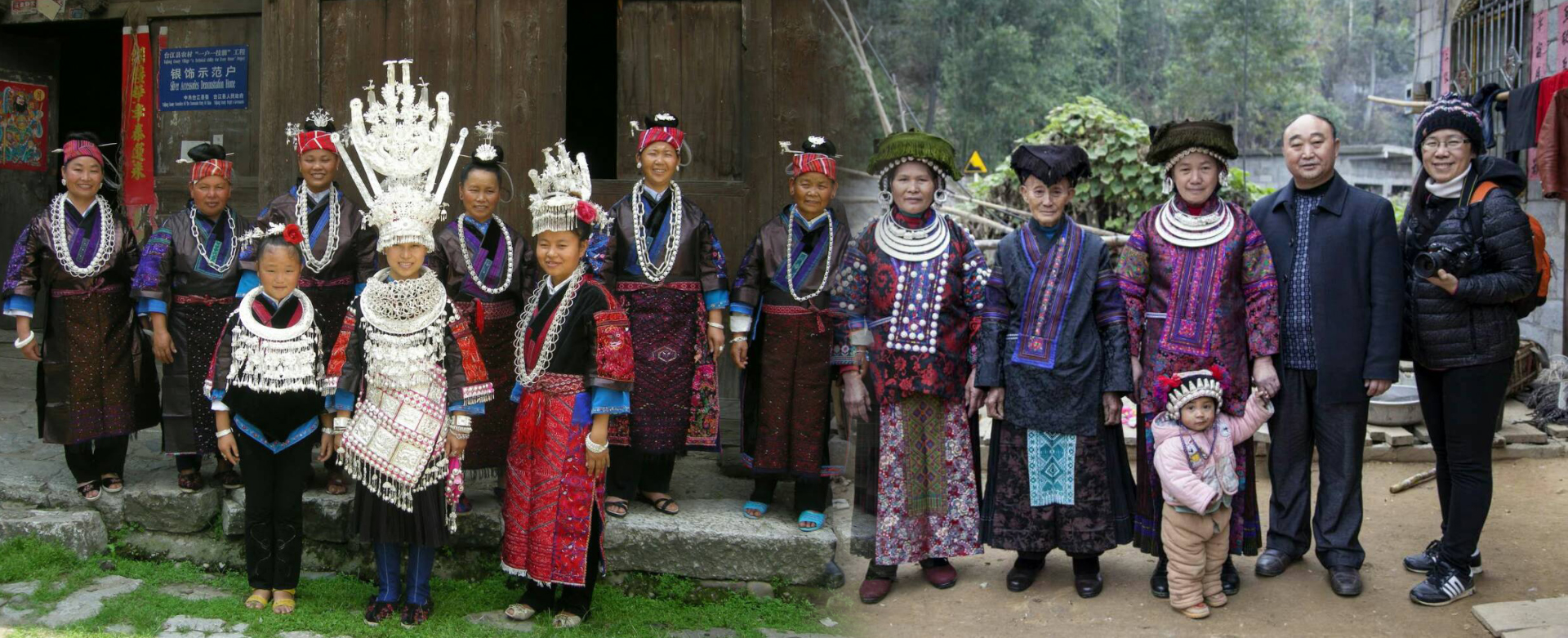Featured Scientist

Zhao-Hua Ho, Ph.D.
College of Fashion and Textiles
Professor
Department of Textiles and Clothing
The art and design of Miao costumes
Professor Ho has been teaching students about textiles and apparel since 1994, and also serves as the director of the “Chinese Textiles and Clothing Culture Center” of the Department of Textiles and Clothing, Fu Jen Catholic University, mainly engaging in collection, research, exhibition and publication of ethnic Chinese costumes. Since 2002, she has been using Qingshui River as a field base for her research, focusing on the art and design of Miao costumes and conducting in-depth research in this area. With the support of the Ministry of Science and Technology over the years, she gradually unraveled the patterns of clothing, the principles of clothing dyeing, weaving and embroidery design, the inheritance of clothing patterns and weaving techniques, and the historical and national factors behind the migration. In her 18 years of field work, she has also witnessed changes to and disappearance of ethnic clothing under economic development and social changes.
Professor Ho's implementation of the Ministry of Science and Technology's plans in recent years is mostly related to the study of Miao costumes, including: Research on the Inheritance and Changes of the Miao Mother Flower Pattern in Qingshui River, (2020-08-01~2021-07-31, 109-2410-H-030-015-), Guizhou Black Miao History and Clothing Style, Texture and Research on the Correlation between Clothing Style, Texture and Pattern (1) (106-2410-H-030-049-,2017/08/01~2018/10/31), A Cross-regional Comparative Study of GuizhouBlack Miao Costume Geometry and Concrete Images (2) ( 104-2410-H-030-056-MY2,2015/08/01~2017/07/31), A Cross-Regional Comparative Study of Geometry and Concrete Images of Guizhou Black Miao Clothing (1) (103-2410-H-030-069-, 2014/08/01~2015/07/31), Research on Miao Paper-cut Flowers Image in Qingshui River Basin (NSC102-2410-H-030-080, 2013/08/01~2014/07/31), to name a few.
In her past field research, Professor Ho found that in the Qingshui River Basin, paper-cut flowers and silver flowers are closely related to assimilation policies and the timber trade implemented by opening up the Miao border (Professor Ho, 2009, 2012, 2014, 2016). The flower cross-stitch and weaving system inherited from the pattern samples is related to the exchange of marriages within the Miao people, mother-daughter inheritance, ethnic distribution and appropriation (Professor Ho, 2016). With the promotion of the special plan of the Ministry of Science and Technology, Professor Ho has completed several papers, including "Pattern samples: The Inheritance of Guizhou Miao Embroidery Skills and Local Society" (Professor Ho, 2016: 97–165). Through an ethnographic field survey of pattern samples of Miao costumes in Shidong of Taijiang County, Qiandongnan Prefecture and Zhenfeng, Qianxinan Prefecture, Guizhou, this paper discusses how embroidery can be used as an intermediary to form a collection of social relationships. It also discusses how to shape women’s self-identity and roles in the community through inheritance of this material. This paper further investigates pattern samples as a representation of distinguishing social boundaries and social relations to understand the mobility and adaptability of the population throughout historical changes. From the field data, it can be seen that the pattern of the samples vary to reflect changes to social relations, such as ethnic migration or intermarriage. It also reflects that women can choose to be assimilated or alienated in the process of self-adjustment in order to integrate into different social environments. This shows the intricate overlapping relationships among pattern samples between regionality, sociality and time.
In fact, the process of passing on embroidery and weaving knowledge from mother to daughter represents not a repetition of inheritance, but the possibility of variation. In Professor Ho’s "Regarding "Pattern-making" and "Self Conduct": The Inheritance and Changes of Shidong Miao Intangible Cultural Heritage" (2014: 51–114), through field ethnography it considers the perspective of the "flower making" culture of the Shidong Miao people, and attempts to understand the naming of the inheritors of "intangible cultural heritage" from this aspect; how does it affect the inheritance and changes of the Miao costume culture? The provides readers with a glimpse of the different ways local people compete under national policies. The paper first looks at different levels of historical images from the perspective of memory, and then moves onto the flow of Shidong Miao embroidery and silver flowers, and the difference between embroidery and silver ornaments in internal and external flows. Using this as a foundation, this paper clarifies the multi-level and complex social network in the flow of Shidong Miao embroidery and silver jewelry. In the past, the Miao people used oral transmission and images as a medium to pass on memories. However, when women generally go to school for education or go out to work, how does their collective memory transmitted though "making flowers" gradually transform into a method of "self conduct" at the core? This perspective allows people to observe the inheritance and changes of the current image of Shidong Miao culture.
Through understanding how Shidong Miao women make the weaving and embroidery patterns of clothing and aprons, we can further understand how the Miao people use embroidered pattern samples as tools for recording and translation. There are two types of pattern samples of Miao women in Shidong: one is for cross-stitch embroidery; the other is for weaving an apron. The pattern presentation of both is done by counting yarns; but the difference is that the embroidery cross-stitch is completed using up and down stitching; while the pattern of the apron is done on two heads using heavy weft, interlacing and partial hanging weaving. This paper believes that in logical thinking, the two are the same using the concept of calculation or coding; the pattern presentation method and composition method are what differ. In the 2018 "Research on the Relationship between Guizhou Blaock Miao History and Clothing Patterns, Weave Grains and Patterns", it further discussed the relationship between loom types and clothing patterns and models. During this project, pattern samples were used as the memory and skills of pattern transformation. Although they are the main basis for inheritance, they are not static.
From past research on the costumes and art of the Miao people, few studies understand the variable factors of time, space, and the inheritance and appropriation of the people involved in the system of picking and weaving flowers. Although Professor Ho’s past research has attempted to explain the inheritance and change of flowering samples (Professor Ho, 2014, 2016), the methods, channels, cognition, and knowledge systems involved in the cultural inheritance and distribution, as well as the methods, channels, cognition, and knowledge systems involved in the system of picking and weaving, are an unexplored field. Although many of the foundations of the research proposed are inherited from previous studies, the originality of this plan lies in the attempt to enter into the methodology and epistemology of Qingshuijiang Miao people’s pattern making. The purpose of such research is to reveal the philosophical level behind the appearance (pattern) and to expand the research paradigm of art anthropology or design. Art anthropology or design as a discipline has a history of nearly a hundred years, and the dialogue between the two is very rare. This study believes that by clarifying the design process of the Qingshuijiang Miao people in weaving patterns, we can further understand the role of art in the region and culture and provide insights to understand the Miao people.




